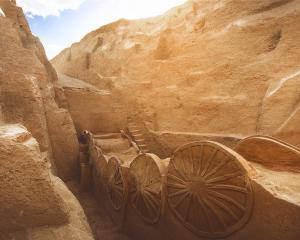Not many people have had their name adopted into the English language.The Earl of Sandwich springs to mind, as does the Duke of Wellington. Then there is Vidkun Quisling and Amelia Bloomer. Now we have a new word, a Miyake event. Fusa Miyake works at the Solar-Terrestrial Environment Laboratory, Nagoya University and she has given her name to a remarkable phenomenon known as a Miyake Spike. These are brief episodes when a solar particle event generates a sharp rise in atmospheric radiocarbon and they were first identified by Fusa. Every year Japanese cedar trees add a growth ring, the shape of which is unique and determined by that year’s climate. If you take a modern tree, and match it successively with earlier trees that have survived, you can obtain an annual chronology. Now, by radiocarbon dating such tree rings, you can get a precise date for a Miyake Spike. One took place in AD 793 and another in AD 993.
Greenland has been in the news recently. It was certainly colonised by the Vikings en route to the New World, and on Newfoundland, they settled, briefly, at the site of Anse aux Meadows. There they build at least eight timber framed buildings, including houses, a hall and a forge. A vexing issue about this site is that radiocarbon dating has not been precise enough to pinpoint when it was occupied, other than with a very wide margin of error. This is a matter of considerable interest, after all, it was the earliest known European settlement of the Americas.
Enter Margot Kuitems and a team from Groningen University. They have radiocarbon dated four pieces of wood from fir and juniper trees that had been felled by Viking metal axes at Anse aux Meadows. They then obtained multiple radiocarbon dates for individual tree rings, and found the consistent presence of the AD 993 Miyuke Spike. From this deduction, it was possible to count the tree rings to the outermost, finding that the trees had been felled in the year AD 1021. There was yet more precision. The structure of the outermost rings revealed that one tree was felled in the spring, another in the summer/autumn. Archaeologists have also been investigating this World Heritage site, finding that it was the base for Viking explorations to the south. In the words of Kuitems and her team, this dates the first known occasion by which human migrations encircled the planet.













